Ali Vaez is Iran Project Director at the International Crisis Group and Senior Adviser to ICG’s president.
Iran and the world's six major powers are schedule to resume negotiations on November 29. What package of ideas are on the table after six rounds of talks in Vienna?

The core bargain for a mutual return to compliance with the 2015 Joint Comprehensive Plan of Action (JCPOA) is straightforward: the United States would roll back sanctions that are inconsistent with the JCPOA, and Iran would roll back its nuclear program in line with the agreement’s limits. The problem is that in practice things are much more complicated.
The United States was reluctant to remove some sanctions that Iran viewed as inconsistent with the deal. Opponents of the JCPOA in Washington tried to tie the Biden administration’s hands in removing nuclear sanctions by relabeling and layering some designations based on non-nuclear pretexts, but the evidentiary basis for some of the designations has evolved over time.
For instance, when President Obama lifted the nuclear-related sanctions against an Iranian factory in 2016 as part of U.S. commitments under the JCPOA, there was scant evidence of its involvement in the country’s missile program. But in subsequent years such evidence has become indisputable. So the Biden administration deems retaining such sanctions as justified.
Another telling example is Iran’s demand that the United States rescind the Trump administration’s unilateral embargo against provision or purchase of conventional arms to and from Iran. It was imposed in 2020 after a U.S. resolution to extend the U.N. arms embargo failed at the U.N. Security Council in one of the worst ever diplomatic defeats for Washington.
Tehran contends that the United States is trying to prevent other countries from engaging in an activity that is no longer prohibited by international law. But given Iran’s power projection in the region, attacks by Iran’s allies on U.S. interests in Iraq, and the maritime tit-for-tat between Iran and Israel, the Biden administration would face a political blowback if it offered such an incentive to Iran.
The nuclear measures are also complicated. For instance, the Western powers want Iran to restore the one-year breakout time (i.e., the amount of time that it would take to accumulate enough highly enriched uranium for a single nuclear weapon) that the JCPOA envisioned. That timeline has now shrunk to around one month. Given Iran’s advancements on research and development, especially on advanced centrifuges, simply dismantling the machines is probably insufficient to create enough distance between Iran’s civilian activities and a potential military nuclear program. But Iran has proven unwilling to destroy the centrifuges’ electronic infrastructure and mothball its assembly lines.
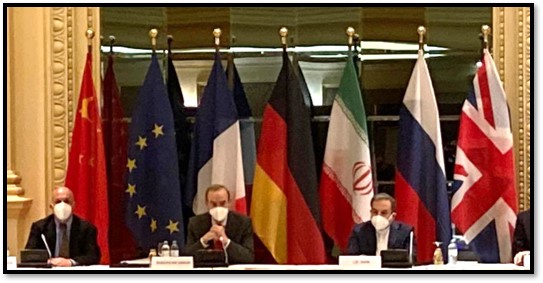
The two sides are also far apart on the question of sequencing. When the JCPOA’s implementation started in 2015, Iran rolled back its nuclear program first. Only after the International Atomic Energy Agency (IAEA) verified Iran’s compliance with its obligations did the United States lift its nuclear sanctions in January 2016.
Iran was disappointed with the sanctions relief it received even when the deal was being fully implemented, and all the more after Donald Trump’s withdrawal from the deal in 2018. So Tehran wants Washington to go first and allow Iran sufficient time to verify effective sanctions relief. The United States seems willing to frontload a degree of sanctions removal this time around, but it is not willing to lift all sanctions at once and then wait for weeks for Iran to return to compliance.
Moreover, Iran and the United States each pressed for a text that included commitments that were not, strictly speaking, within the JCPOA’s original framework. Washington wanted an explicit Iranian pledge to engage in follow-on negotiations toward a “stronger and longer” deal that would potentially encompass Iran’s regional power projection. Tehran sought assurances that Washington would not pull out of the JCPOA a second time or continuously undermine it by imposing new sanctions. Both sides’ demands were understandable, but difficult to bridge.
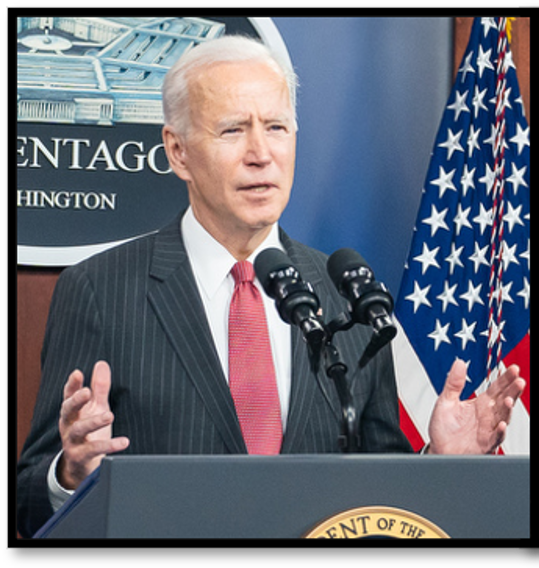
President Biden pledged during the campaign that he would restore the JCPOA, coupling it, though, with a promise to build a better successor agreement on top of the original deal. Giving away U.S. sanctions leverage without that commitment from Iran would subject the administration to harsh criticism at home.
For its part, Iran was burned by Trump’s reneging on the JCPOA and knows full well that international firms will be wary of investing in Iran as long as the deal is perceived as fragile and unsustainable. That is why Tehran is insisting on guarantees that Washington would not once again undermine Iran’s ability to reap the deal’s economic dividends or renege on the agreement.
There are solutions for overcoming these obstacles. The two sides could either drop these demands or link them. In the second case, after restoring the JCPOA, they could keep negotiating to strengthen it, building assurances – for example, a stringent exit clause – into a follow-on accord.
The text that was developed in Vienna had most of these issues in brackets when talks came to a halt on June 20, 2021, for deliberations with respective capitals. The Iranian negotiators were supposed to return to Vienna a week or 10 days later but stayed away as power changed hands in Iran, waiting for the new hardline President Ebrahim Raisi to form his cabinet. On October 27, Iran’s new chief nuclear negotiator, Ali Bagheri Kani, announced that talks would resume by the end of November after a five-month hiatus.
Is Iran expected to pick up where its former negotiating team left off? Or will it put new demands on the table? If so, what?
The P5+1 is united on the need to pick up where they left the talks back in June. But Iran's new negotiating team is highly critical of its predecessor’s approach and might want to reopen some issues, add new demands or change some of its priorities.
Looking ahead, there are three leading scenarios:
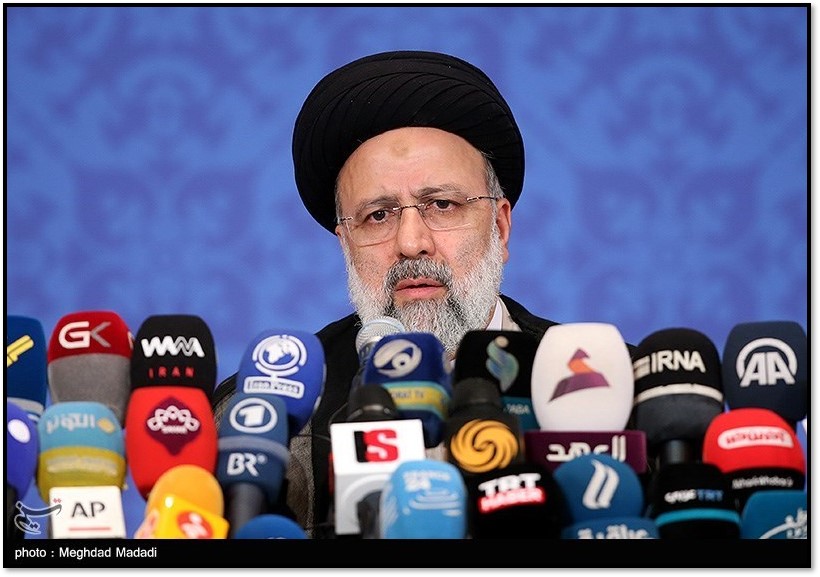
Scenario 1: President Raisi's team agrees to a deal that is marginally better for Iran than the package that was on the table in June. Although they were close to their bottom lines, both sides probably still have some maneuvering space.
If they are willing to compromise, this would be the least costly option. It would provide the Raisi administration with an early political win, which could be framed as their victory given that the hardliners now control all levers of power and dominate the country’s media. It would also constitute a much needed economic reprieve amid a confluence of crises that Iran is facing, ranging from economic stagnation and social unrest to the raging COVID-19 pandemic.
The Biden administration, which has had a major setback in Afghanistan, would benefit not just by defusing a simmering nuclear crisis, but also by potentially paving the ground for de-escalation in Iraq and in the Gulf. This would allow Washington to shift its focus to the larger challenge of great power competition with China and Russia. The parties could then try to achieve a better-for-better deal that is more satisfactory for both sides and thus more stable than the JCPOA.
Scenario 2: Raisi's team drives a hard bargain and makes maximalist demands that are unacceptable to the United States and European powers. This is the most likely outcome because the Iranian leadership seems to believe that time is on its side. Iran sees an advantage in the exponential growth of its nuclear program. It also views the U.S. leverage from sanctions as past its peak and now at the point of diminishing returns. And Iran thinks that the West has no appetite for military confrontation. This calculus is underpinned by an optimistic view on Iran’s ability to remain afloat as its economy has stabilized and oil exports to China hover around a million barrels per day.

In this scenario, Iran would insist that the United States lift all the sanctions that were imposed and reimposed since 2017, provide the sanctions relief upfront, and allow several months for Tehran to verify its effectiveness. Iran would also demand guarantees. It is not hard to predict what comes next as we have seen this movie before.
In 2005, when Mahmoud Ahmadinejad came to power, Iran pursued a similar confrontational approach, which led to 10 years of mutual escalation in what I call the race of sanctions against centrifuges. It was a lose-lose game for both sides and brought them to the brink of military confrontation.
Renegotiating the package that has been coming together in six rounds of talks is not going to shift Washington’s bottom lines or core demands. But it risks bringing down the JCPOA. This is primarily because there are pressure points on the timeline. The United States and European powers are increasingly concerned that Iran’s advances are approaching the point of irreversibility, making the existing agreement, even if fully restored, insufficient. At the same time, Iran is in a standoff with the IAEA over access for its inspectors and outstanding issues with regards to Iran’s past nuclear activities. If these issues are not resolved before the end of 2021, another referral to the U.N. Security Council is almost certain.
Another possibility is a protracted stalemate, in which there is a semblance of a diplomatic process and the deal does not completely unravel, but both sides are more focused on ratcheting up their leverage than on reaching a negotiated settlement. This is not a sustainable situation and could not last beyond mid-2022, given Iran’s nuclear advancements and risks of military action by Israel and/or the United States to prevent the weaponization of Iran’s nuclear program.
Scenario 3: Raisi's team seeks to negotiate a new deal to replace the JCPOA. A consensus seems to have emerged among the Iranian hardliners, who now control all levers of power, that the JCPOA was flawed from the beginning and that its restoration is futile as it will only produce the same outcome: depriving Iran of its nuclear leverage with an empty promise of economic incentives, followed by a return of sanctions. This approach has a lot of appeal to those in Tehran and Washington who deem the JCPOA inadequate and seek a more advantageous agreement, or JCPOA-plus.
Tellingly, in June, Kayhan, the hardline daily whose editor in chief is appointed by the Supreme Leader, wrote: “That the JCPOA must change is the one issue upon which Iran and the U.S. converge.” But the path to a new deal is likely to pass through a risky escalation.
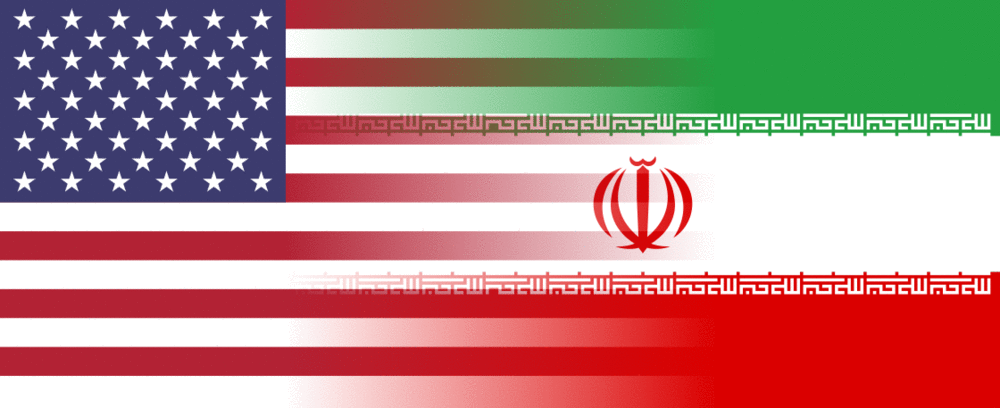 Iran might up the nuclear ante further, prompting the United States to impose more coercive measures, both looking for more leverage ahead of a return to talks. Iran, as it has already indicated in the six rounds of talks in Vienna, would want more sanctions relief, including from U.S. primary sanctions. They were the main obstacle to the Iranian banking sector’s return to the U.S. dollar-dominated global financial system after the United States lifted sanctions in 2016. Iran would also want compensation for damages incurred during the Trump administration’s “maximum pressure” campaign.
Iran might up the nuclear ante further, prompting the United States to impose more coercive measures, both looking for more leverage ahead of a return to talks. Iran, as it has already indicated in the six rounds of talks in Vienna, would want more sanctions relief, including from U.S. primary sanctions. They were the main obstacle to the Iranian banking sector’s return to the U.S. dollar-dominated global financial system after the United States lifted sanctions in 2016. Iran would also want compensation for damages incurred during the Trump administration’s “maximum pressure” campaign.
Western governments, in turn, would want longer-term restrictions and more rigorous monitoring of Iran’s nuclear program. This scenario could ultimately lead to a JCPOA-plus, but the danger is that it could escalate out of control rather than foster a resolution.
The path to a JCPOA-plus does not need to be so treacherous. One option to avoid the escalatory cycle would be to quickly strike an arrangement that amounts to a JCPOA-minus. Iran could agree to freeze proliferation-sensitive activities, including uranium enrichment above 3.67 percent, advanced centrifuge work, and uranium metal production. In return, the Western powers could accept an agreed-upon level of oil exports and/or partial access to its frozen assets.
An interim arrangement could cap the immediate nuclear proliferation crisis, deliver economic reprieve for Iran, and buy time for the parties to negotiate parameters of a more-for-more JCPOA-plus that addresses their broader demands. One pertinent question here is whether such an interim agreement would trigger the Iran Nuclear Agreement Review Act (INARA) of 2015 – a U.S. law requiring any new deal with Iran to be subject to a congressional review. But a JCPOA-minus is not a new deal, it is a waystation toward the original agreement.
What is the status of Iran's cooperation with the International Atomic Energy Agency (IAEA) on monitoring its nuclear program? How is Iran breaching its obligations? And how might that dynamic impact diplomacy?
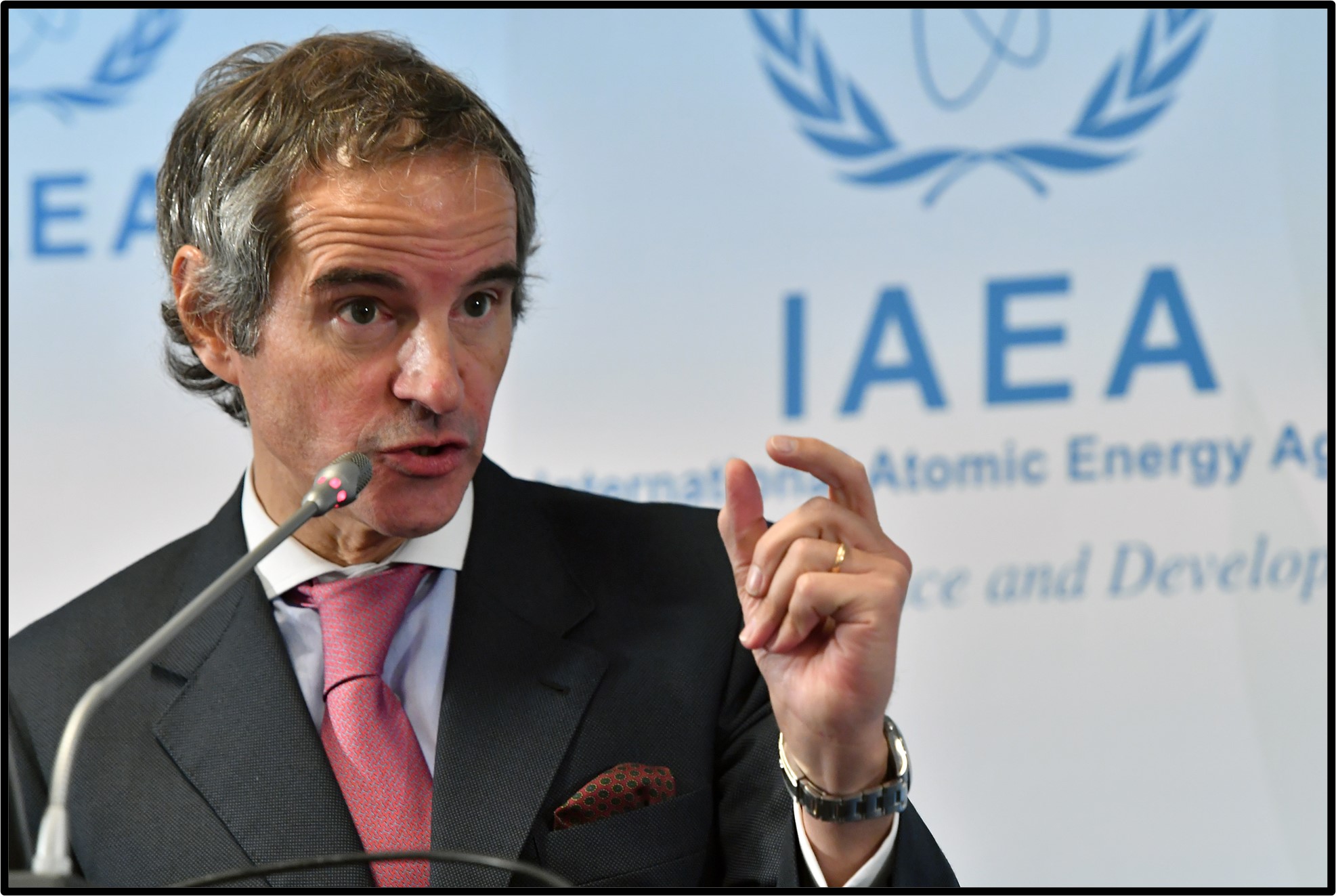
Absent progress in negotiations, Iran is unlikely to resolve an issue that has taxed its relations with the IAEA: the inconclusive investigation into four sites that Tehran had not disclosed. At each of the sites, the agency has found evidence of human-made uranium and other activities that Iran has yet to satisfactorily explain.
The agency’s monitoring and verification capabilities have also been limited. In February, Iran stopped the implementation of the Additional Protocol, which gives enhanced access to U.N. inspectors, but agreed to a temporary technical understanding with the IAEA to keep the cameras at the nuclear facilities where the agency lost its access and preserve their recordings, so that the IAEA’s continuity of knowledge could be restored if the JCPOA is revived.
In October, however, IAEA chief Rafael Grossi warned that the monitoring program was “no longer intact.” Iran has not permitted the IAEA to install new cameras at a centrifuge production site damaged in a June 2021 attack. Iran has resumed centrifuge production at the site, and there are growing fears that it might be diverting some of the produced machines toward a clandestine site.
Iran managed to avert a censure resolution at the IAEA’s Board of Governors meetings in September and November through minimal engagement with Grossi and the West’s reluctance to derail the resumption of JCPOA talks, but if little changes between now and the IAEA’s next convocation in early 2022, a Board resolution expressing grave concern and an eventual referral of Iran to the U.N. Security Council will become inevitable – a redux of 2006. Such a development could lead Iran to escalate further, rendering the JCPOA moot.
U.S. and European officials have warned that further advances to Iran’s nuclear program may complicate a return by all parties to the JCPOA. How much progress has Iran made on key components that would make obsolete a return to the deal?
The Biden administration’s assessment seems to be that Iran’s nuclear advancements are so far reversible. I doubt that Washington has established a specific point of no return, as this would be highly dependent on the pace of Iran’s nuclear advancements that is anything but linear.

Two developments, however, could change the U.S. calculus. One would be the development of a nuclear capability that the existing deal would not be able to effectively roll back. Examples include further development of advanced centrifuges like the IR-9, which is reportedly 50 times more powerful than Iran’s first generation machines, or uranium enrichment to weapons grade (above 85 percent).
The other development would be a breakdown in the inspections regime that creates a major loophole in the IAEA’s understanding of what is happening in Iran’s nuclear program.
Violations of Iran’s safeguards agreement or blocking the IAEA’s access to key nuclear facilities would likely alarm the international community. That includes Russia and China, which are more sympathetic toward Iran, but certainly want to avoid the two unpalatable options of Iran having a bomb and Iran being bombed.
Iran’s nuclear escalations in 2021 were a reaction to alleged Israeli covert operations against Iran’s nuclear program, including the assassination of Iran’s top nuclear scientist, Mohsen Fakhrizadeh, in November 2020. In response, Parliament passed legislation that mandated the government to ratchet up the nuclear program while ratcheting down the JCPOA’s nuclear transparency measures. Subsequently, an act of sabotage at the Natanz facility in April 2021 led Iran to ramp up its uranium enrichment level to 60 percent.
Further covert attacks could shorten the JCPOA’s shelf life. As would developments in the region, including more attacks by Iran-backed Shiite militias on U.S. forces in Iraq and maritime confrontations between Iran and Israel, which became deadly in July in an alleged Iranian attack on a tanker with ties to Israel in the Gulf of Oman. Two crew members were killed, a British national and a Romanian national.
The more time the negotiations take, the harder it will be to revive the JCPOA.
